Ferrari Modena
|ULF POSCHARDT
In the 032c archive, we highlight the best pieces from over 20 years of printmaking. This print feature with Ferrari CEO Benedetto Vigna written by Ulf Poschardt was originally published in 032c Issue #46.
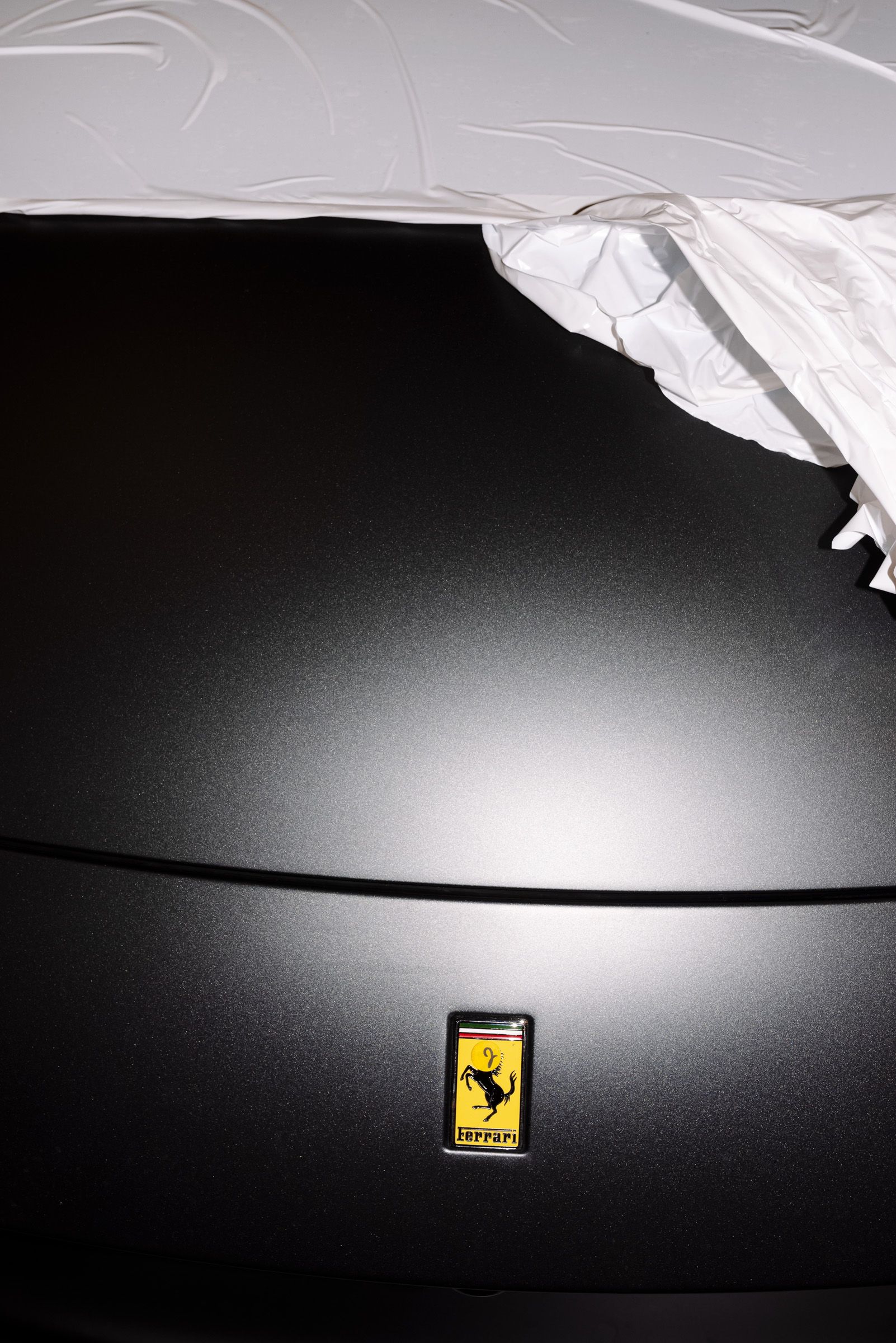
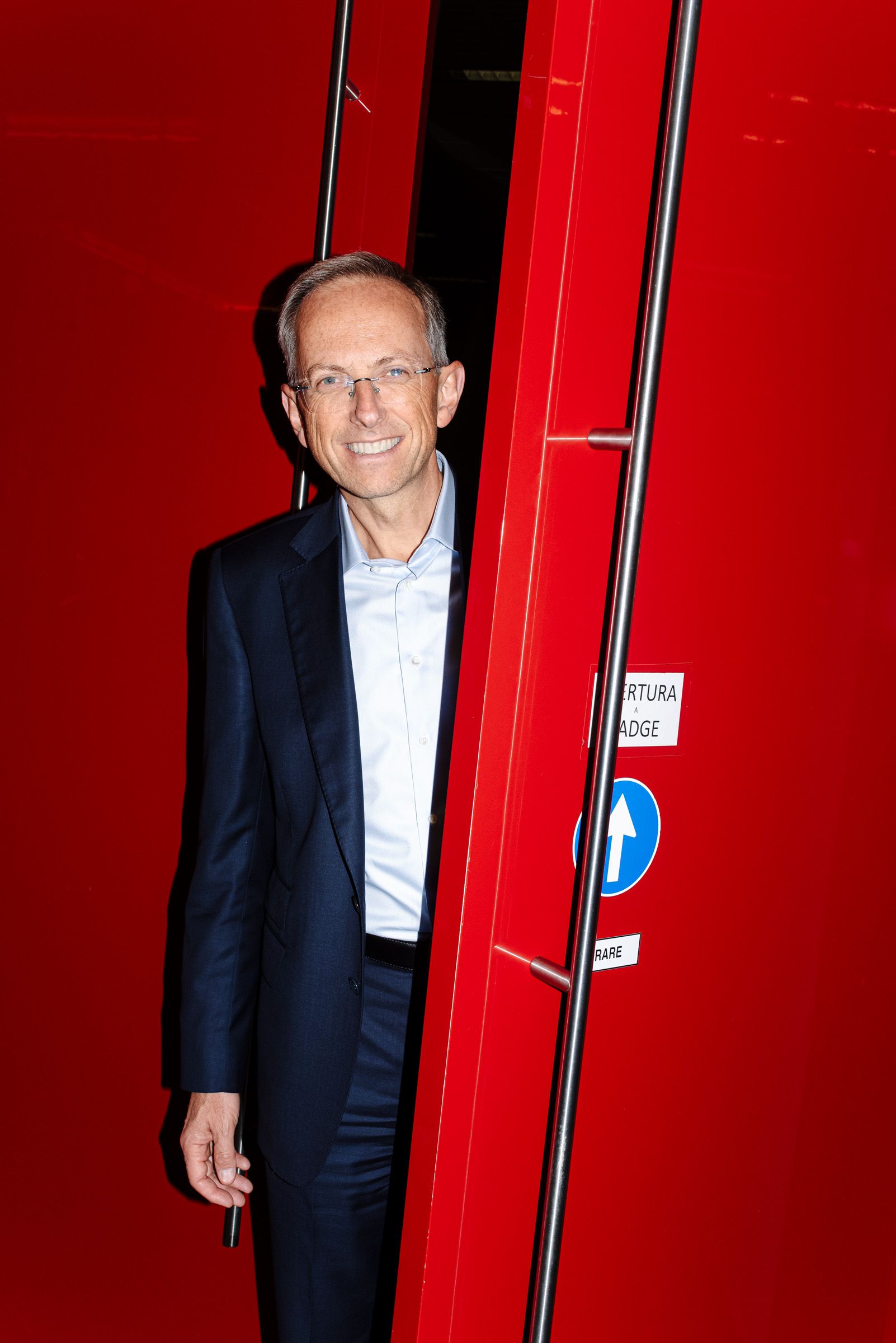
From micromachining atoms to automotives: BENEDETTO VIGNA was one of Europe’s leading physicists and a pioneer in the field of micro-electromechanical systems before assuming the reins of the Cavallino Rampante as Ferrari’s CEO.
Near Modena, the landscape of Maranello is rather barren, rural, and modest. The closer you get to the Ferrari factory, the more people you see at bus stops and on the sidewalks who wear red workshop suits with the Cavallino on the chest and the Italian flag on the left sleeve. Everyone in this region is proud to work for Ferrari.
It’s a bit like a religion. The austerity and functionality contrast with Italian elegance as soon as you enter the premises through the historic gate that has stood in place since Enzo Ferrari founded the company in 1948: the blackest of loafers, the tightest of shirts, the best-fitting suits, the brightest of smiles, and John Elkann (chairperson of Stellantis) strolling between factory halls on the phone.
The new building is bright, clear, and transparent. The latest Ferrari models are lined up on the second floor, and CEO Benedetto Vigna gives me a rare interview on a bar stool. He makes an ascetic and wiry impression, with nickel glasses like an intellectual, which he also proves to be.
ULF POSCHARDT: We’re in Ferrari’s new E-Building – it looks great.
BENEDETTO VIGNA: Thank you. But that’s not the point. Or not only. We built these buildings to create an inspiring environment for our employees. The focus has always been on the people. And it still is. Even if technology and innovation will play an important role here in the future. Innovation that doesn’t have people as its focal point will never be truly successful. That’s how we see it, at least.
UP: Why is the building called the E-Building?
BV: The E stands for three things: energy, evolution, and environment. Three types of Ferraris will be produced here: combustion engines; hybrid Ferraris; and, soon, there will be a Ferrari that is completely electrically powered. Humanism also means that we put our customers at the center of everything we do. They should always have the opportunity to decide which technology they want to use and enjoy. If you visit us again in 2026, you’ll also see electric cars here.
UP: Seriously?
BV: Yes. We’ve made the vow to be carbon neutral by 2030–and we will fulfill this promise. In addition to energy efficient production, this [process] will include a corresponding product portfolio, and, naturally, an e-Ferrari. This is how Ferrari will become sustainable.
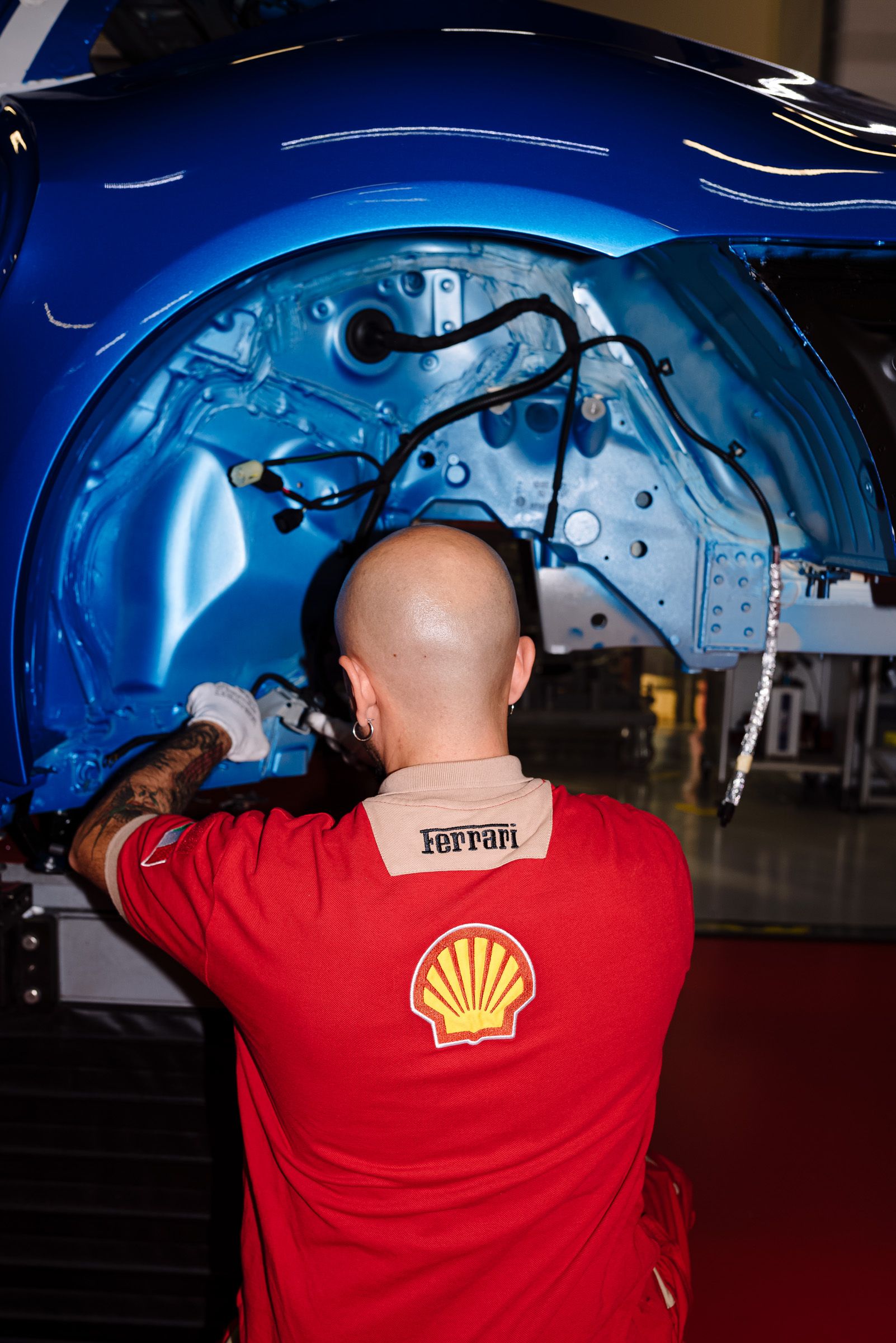
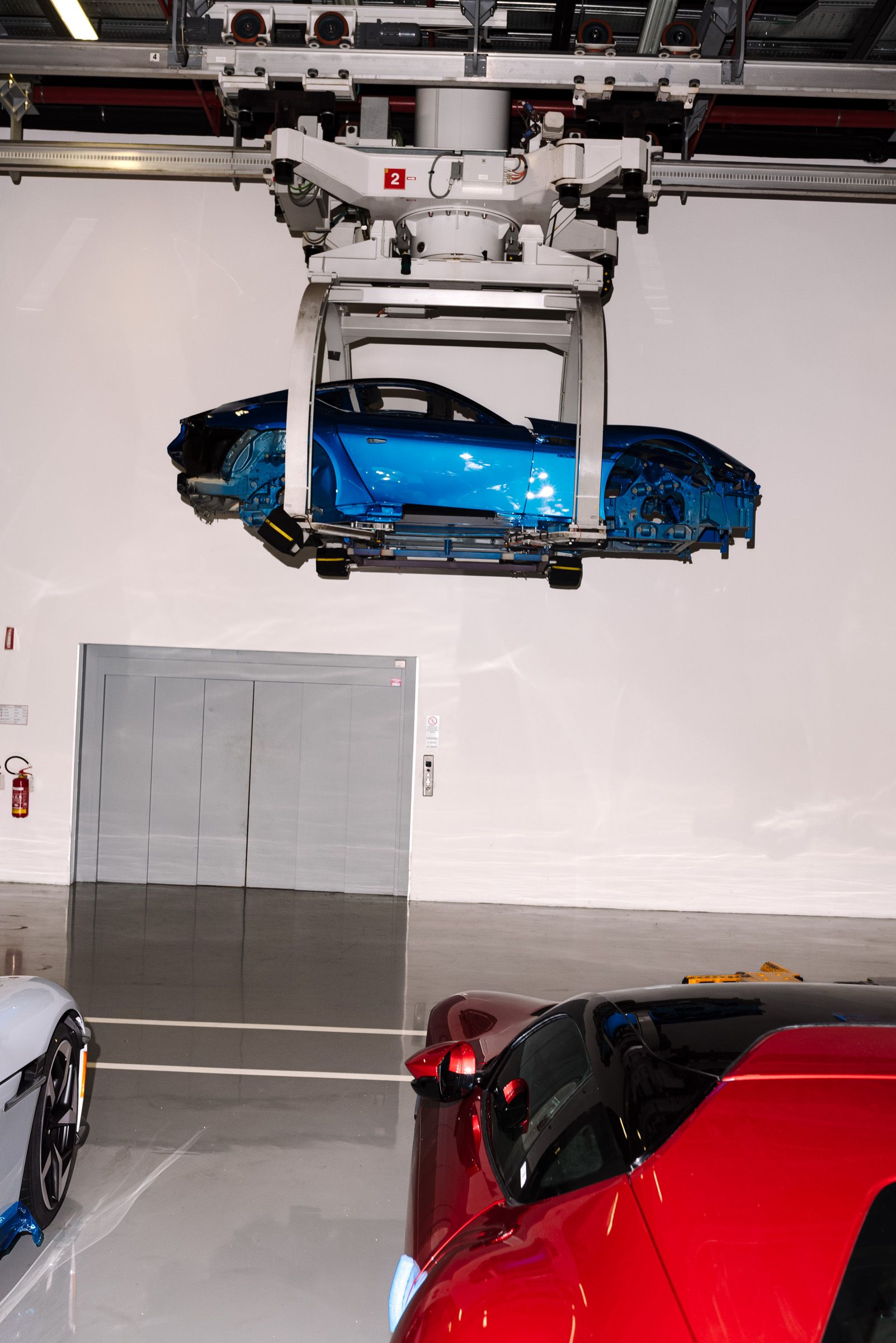
The craftsmanship involved in assembling a Ferrari from scratch relies mostly on the workers. This commitment to quality means that buyers have to wait up to 18 months to receive their object of desire. Here, the blue chassis of a Ferrari Roma is about to enter the assembly line.
UP: Okay, this raises a few more questions. Are you also becoming sustainable in your production?
BV: Of course. This new factory is designed to be so. What’s more, we don’t want to flood the world with cars. As a company, Ferrari doesn’t want to increase production numbers. We don’t want to push the quantity of cars but the quality of them.
UP: People who already own a Ferrari will be particularly happy about that.
BV: And the environment will be, too. Our customers are very conscious consumers. They also understand the importance of environmental awareness. We care deeply about the environment; we see it as a moral obligation. And we can significantly reduce emissions with this building – for instance, through the solar panels on the roof that allow us to turn off the generators. We will … use green energy [exclusively] in this building. We collect rainwater on the roofs, and the building was constructed on the site of a demolished warehouse. We didn’t want to waste a new plot for building.
UP: That sounds incredibly sensible. How does that go together with a 12-cylinder SUV?
BV: It’s much simpler than many think. This apparent contradiction doesn’t hold up to rational scrutiny. There’s only one way to convince people to reduce CO2: you have to take a scientific approach and give logical arguments. I’ve always found the Germans to be very rational. And the decisive factor is the car’s CO2 footprint over its entire life cycle, from the cradle to the grave. An example: two years ago, we emitted 16 percent more CO2 than we do today, even though we’ve increased production volumes. And as for the 12-cylinder, we’re on the verge of using recycled aluminum.
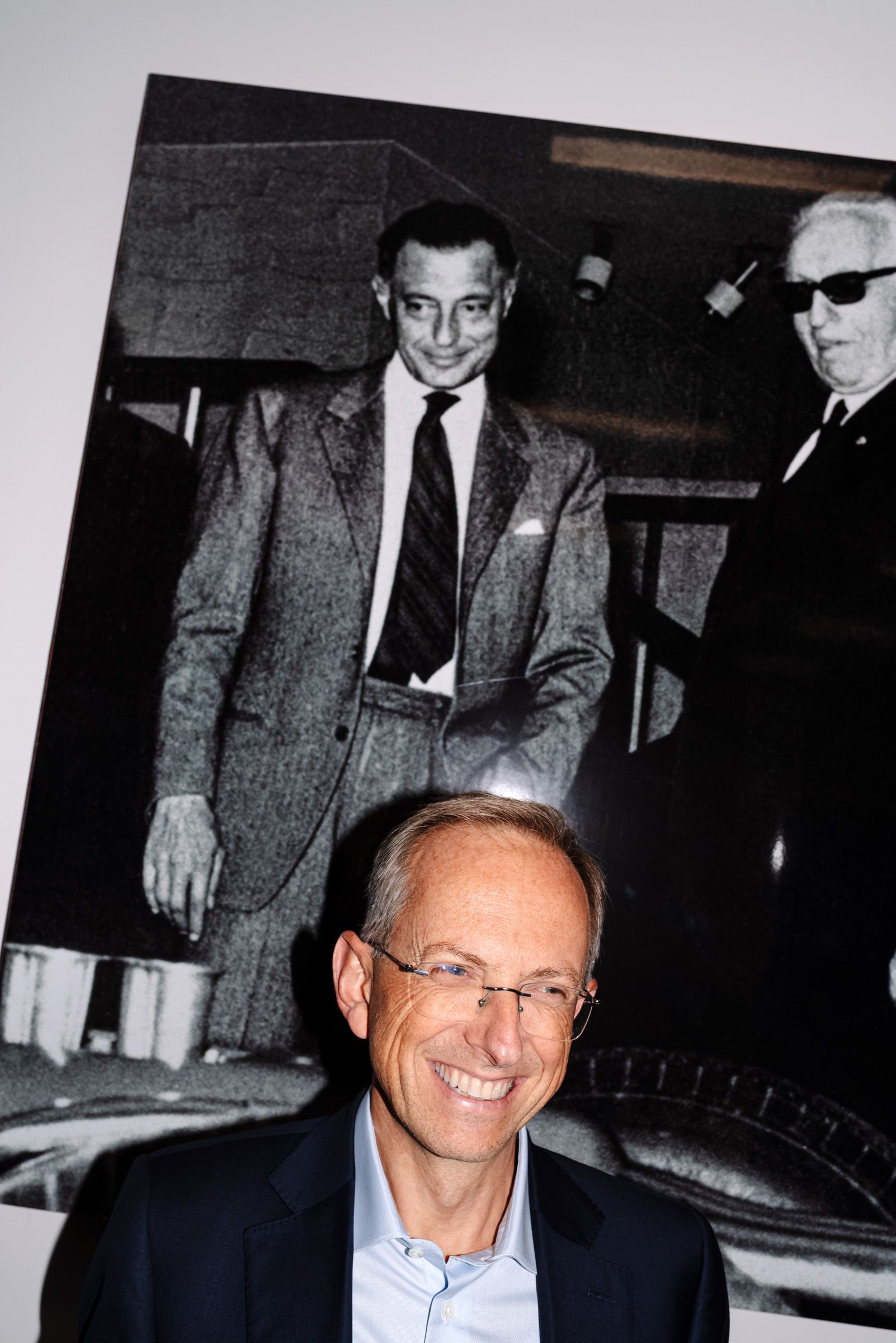
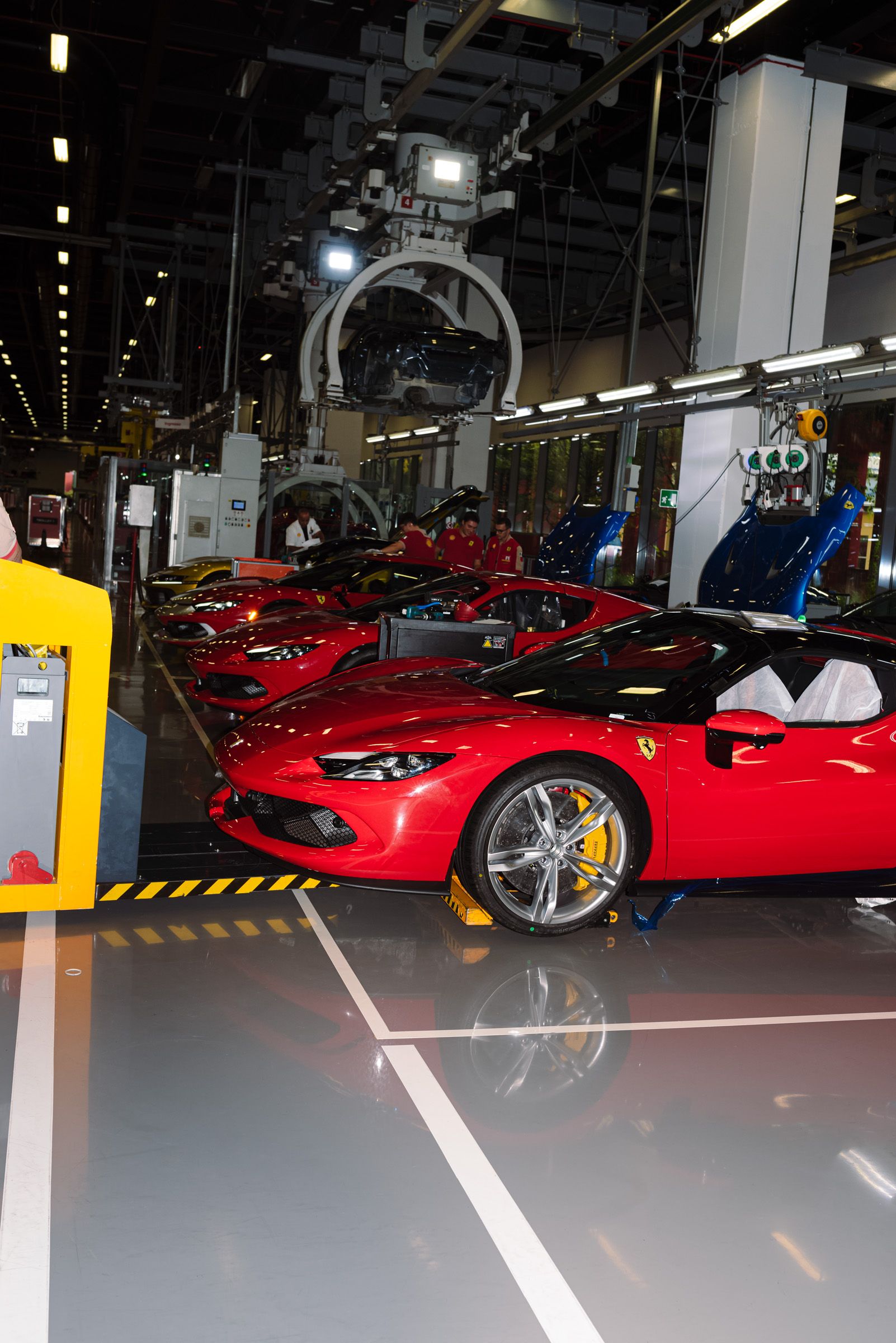
Maranello’s Red House keeps their production levels low, selling only around 13,000 vehicles each year and thereby reinforcing an aura of exclusivity. Shown here are a few red Ferrari 296 GTBs.
UP: How is that possible?
BV: Work is optimization. You approach it like a scientist. In the past, we neglected certain production steps. We’ve now focused on these issues, not with our money but with our brains. Again, what matters is the entire life cycle of a car. And I’m convinced that CO2-neutral fuels will become a reality – I deliberately say CO2-neutral and not synthetic, since biofuels already exist. And there’s a lot of nonsense on the internet. Half-truths are sometimes used in the climate discussion.
UP: What do you mean by that?
BV: We have always said that technological change doesn’t happen overnight. A comprehensive transformation in reducing CO2 takes time if it’s going to be done properly and sustainably. We are convinced that several propulsion technologies will coexist for some time, and that it is our responsibility to make them available to our customers – this also applies to the electric motor.
UP: Ferrari is a brand that never wanted to be fashionable. It understood style as something self-evident. What is your view of Enzo’s selection of design partners, such as Zagato and Bertone, and his clear fixation on the engine?
BV: Enzo had a passion for engines – and look what it achieved! We work to remain faithful to his vision every day. The state-of-the-art V12 in our new 12Cilindri can trace its roots back to Gioacchino Colombo’s legendary engine design that powered the first true Ferrari, the 125 S, in 1947. Engines were Enzo’s focus … his fixation. He joked that he didn’t sell cars, he sold engines. But while he enthused and obsessed over engines, he also had a keen Italian eye for beauty. He was very selective in choosing design partners, like Pininfarina, who understood that true style is timeless. Today, we have our own design department. They carry on this tradition for timeless elegance and ensure that a Ferrari is forever.
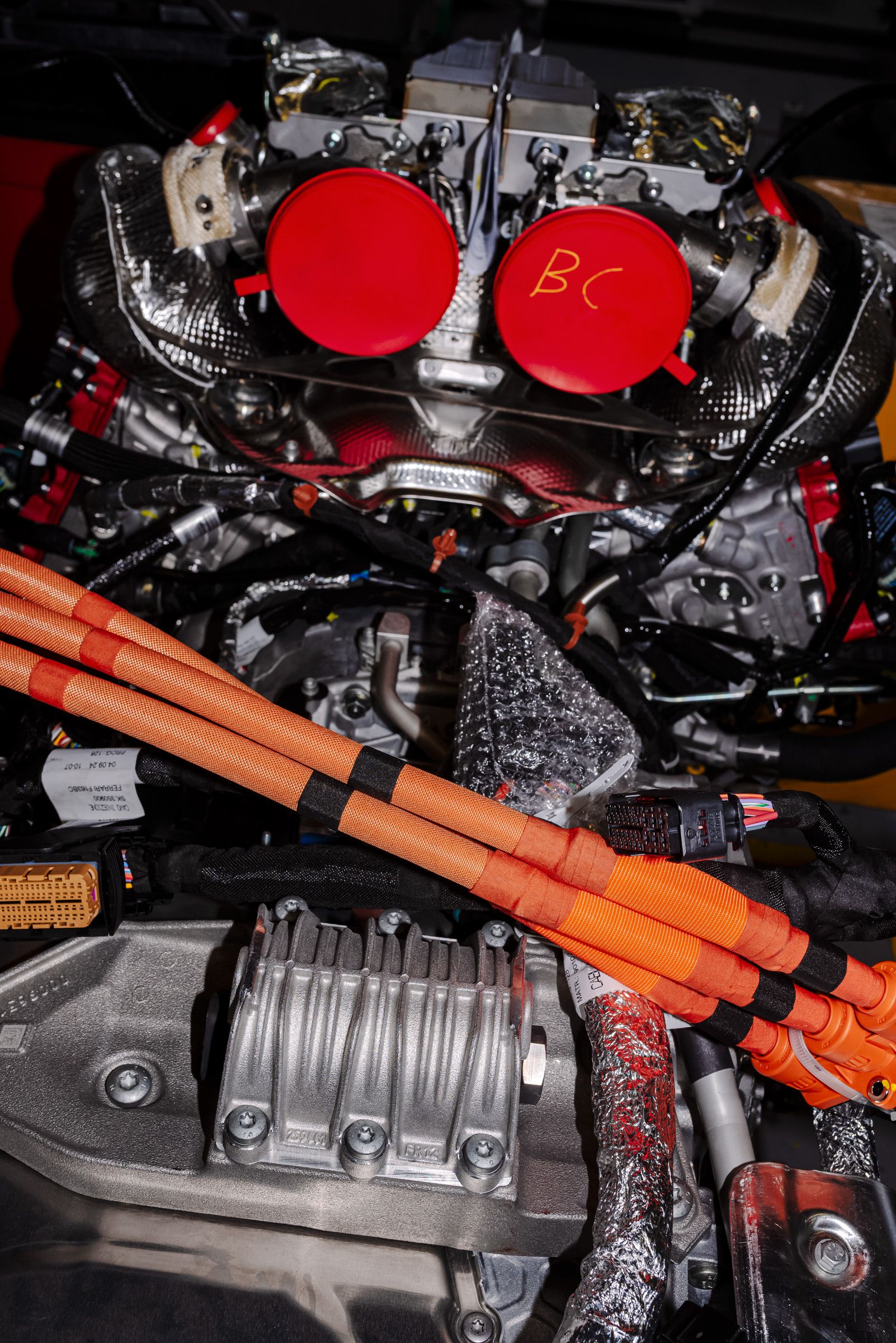
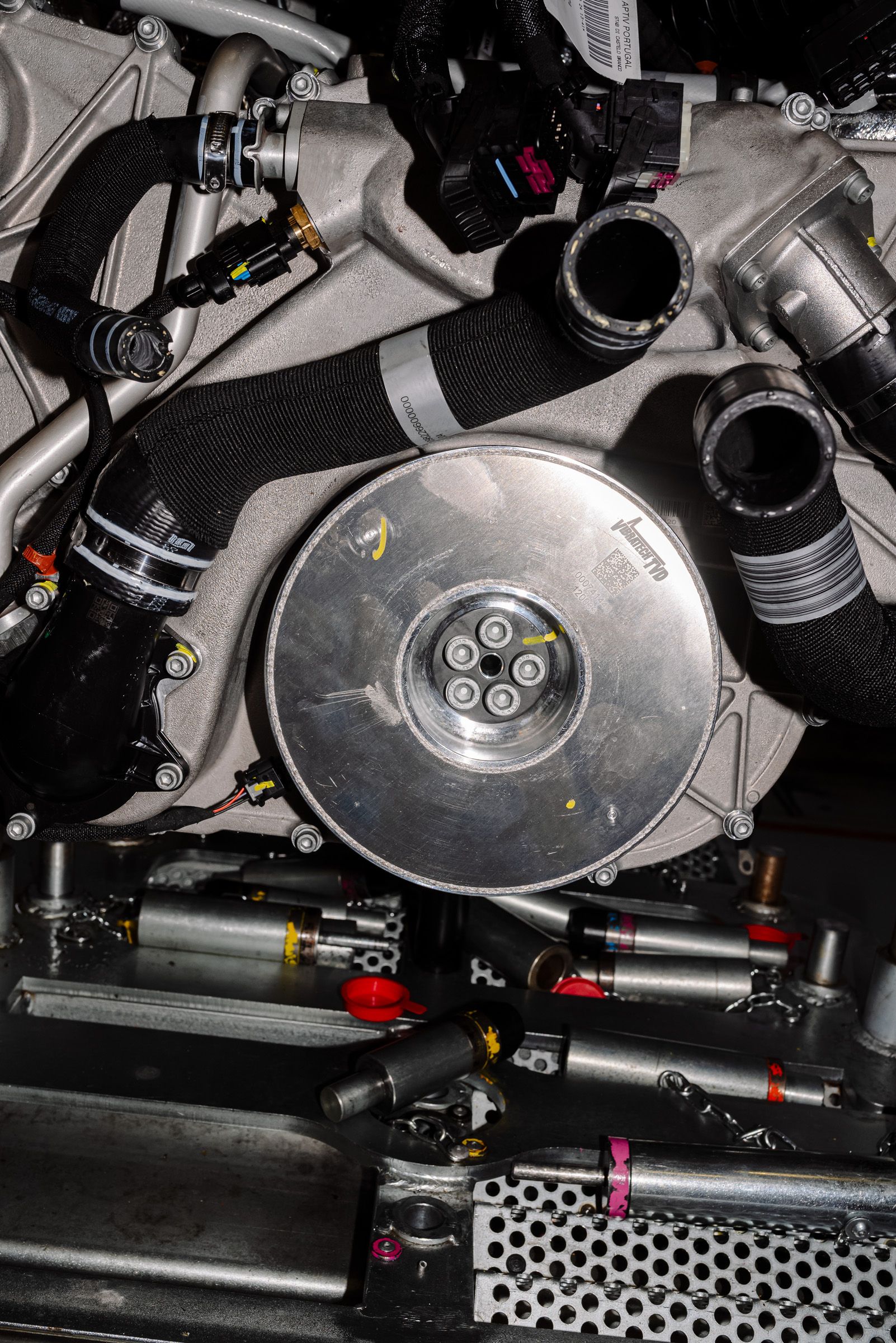
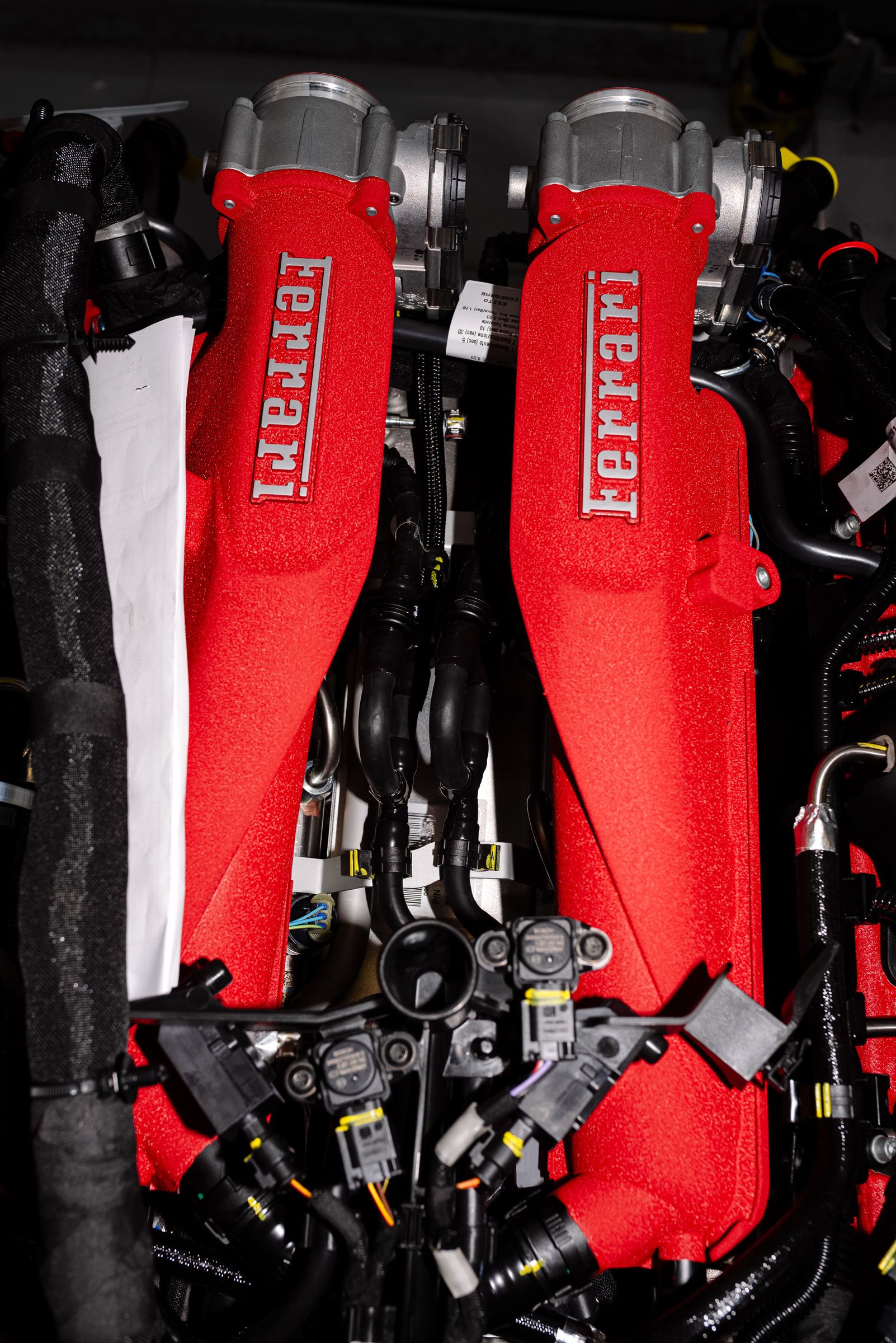
From right to left, a V8 (eight-cylinder) engine of a Ferrari Roma, and two shots of a V6 engine with trademark damper and crankcase details.
It takes over five days to assemble the hundreds of intricate components that make up the iconic Ferrari engine. This fixation has deep roots: founder Enzo Ferrari used to joke that he didn’t sell cars, he sold engines.
UP: Back in 1973, the Club of Rome pointed out that every beautiful thing that you don’t throw away is sustainable. And nobody throws away a Ferrari with a combustible engine. This doesn’t apply to electric cars, which are still rather boring, cold, and don’t evoke any emotion. They have no soul.
BV: I understand your point. Or, let’s say, I think I do. Today’s electric cars are heavy, they don’t make any sound – when you get into the car, you can’t tell whether it’s on or off.
UP: They don’t have a smell either.
BV: That, too. But as far as performance is concerned, they’re really heavy. You can feel the weight, if the car isn’t properly engineered. But that doesn’t necessarily have to be the case. With our Purosangue, which also weighs over two tons, things are different. You can drive it quite fast on the racetrack, as I myself enjoy doing.
UP: Tesla fans like to say that a classic Ferrari can’t compete with electric cars when it comes to acceleration. But that’s like comparing a kitchen to a microwave.
BV: Yes. If you sit behind the wheel of a flat-12 Ferrari, it’s because you love cars. It’s because you’re an automobile connoisseur. You hear the sound, you hear the engine, you interact with it with your whole body. It’s a combination of these senses that evokes emotion. It’s not enough that an electric car accelerates faster. But that’s why we study psychophysics. The perception of performance, the so-called power delivery, is more important than the cold, hard numbers of the performance. Whether old or new, the pleasure of a Ferrari is a highly subjective experience triggered by emotions.
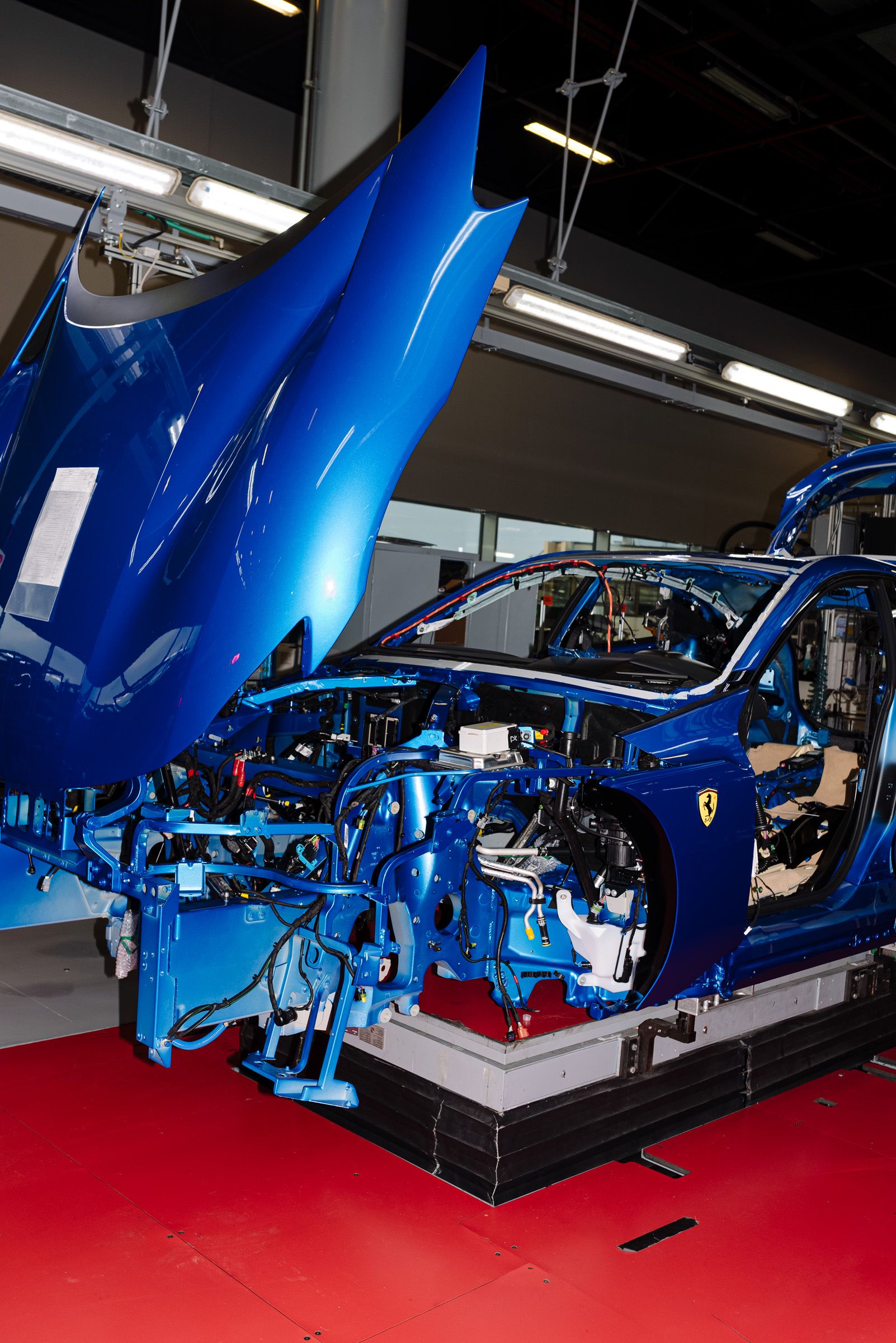
Prospective owners of a Ferrari must adhere to a strict set of rules, including avoiding any tampering with the iconic badge and refraining from repainting the car pink.
UP: Do you have perception engineers?
BV: [laughs] No, we have people who are better at this than anyone else: our test drivers. Who is the first customer, the first person to drive a Ferrari? Not the engineers, not the designers, not the managers: it’s the test drivers.
UP: What does that mean?
BV: When I joined the company, the test drivers were still nine levels below the CEO – now they report directly to me. People like Raffaele de Simone can feel every gram of excess weight on the car. And they have an infallible sense for the right balance of lateral acceleration, forward momentum, braking behavior, and background noise. Simply installing speakers that make noise is not something we are interested in doing. But to get back to the test drivers: someone like Raffaele knows what makes a Ferrari special, because he’s been driving one for decades and decades. If Raffaele is happy with an electric Ferrari, then things turned out well.
UP: To think and manage like that is also a form of humanism.
BV: Absolutely.
UP: Generally speaking, Ferrari is so successful because it has been able to combine its past and myth with innovation and transformation. The German philosopher Martin Heidegger once said that the past is the future. As a CEO, is it your job to make sure it stays that way?
BV: First of all [laughs], Heidegger is right. When you work for a company like this, for a luxury business, you have to be aware of that fact that we are all guardians of the brand in our own way. As a CEO, you have to be able to connect to the past and the future. I come from the tech industry, where the value of tradition is basically zero – that is, if it isn’t seen as a burden. We have to respect the past at Ferrari. We have to interpret it in the right way. That’s an important aspect of my job. I try to synchronize the past and the future.
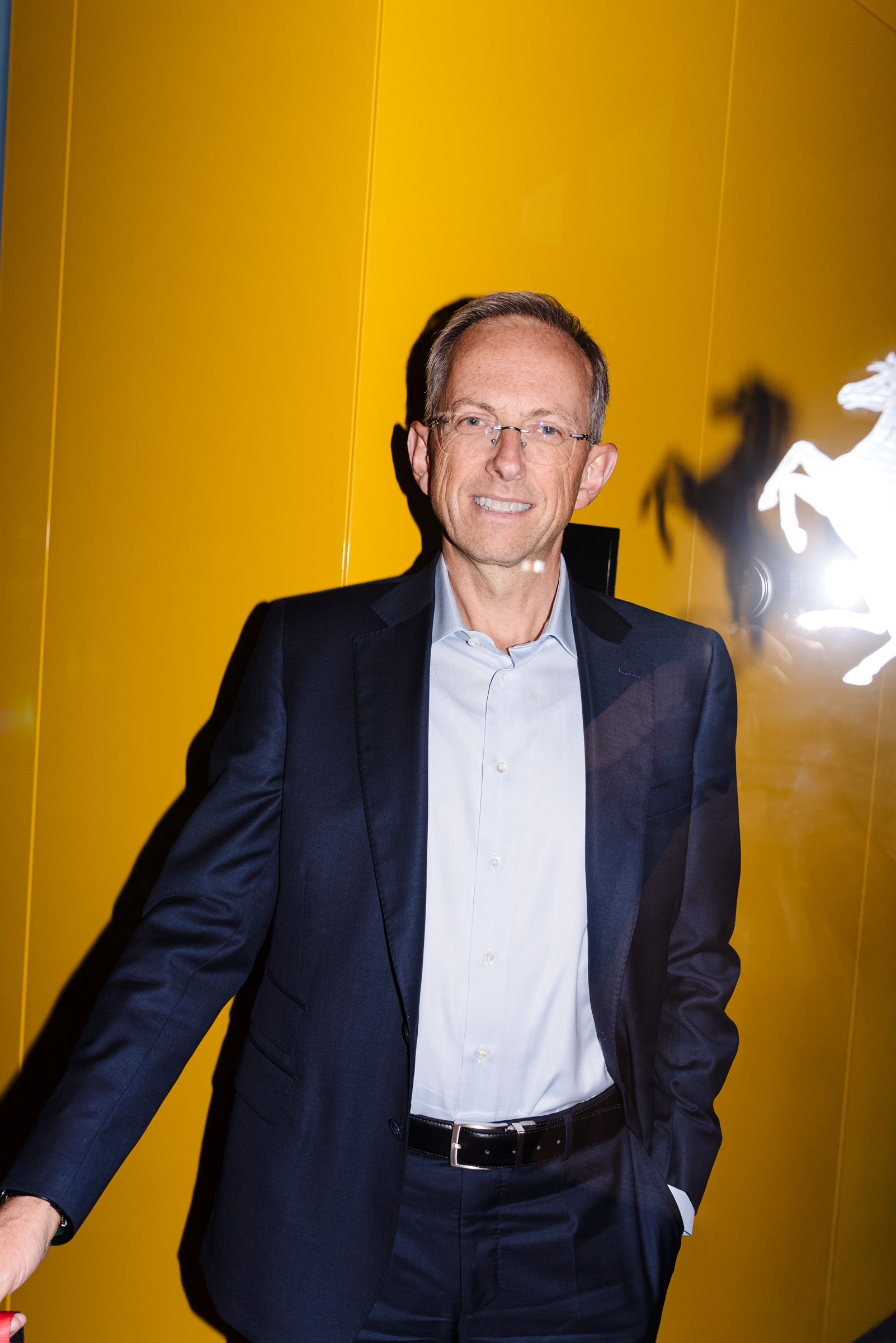
UP: Is Ferrari one of the most magical companies because the history of the founder, his engineers – Colombo, Lampredi – and designers and drivers all end up contributing to the brand? From Ascari to Lauda to Michael Schumacher, the list goes on.
BV: Ferrari is special; everyone can feel it when they come to Maranello. There’s an authentic magic to the place that originates in Enzo Ferrari’s life. It’s a story of passion, audacity, grit, determination, will to progress, and exceptional people. From Ascari to the current drivers, and from Colombo to the talented engineers I work with today, everyone adds a new chapter. Our founder captured it perfectly when he said, “Factories are made of machines, walls, and people. I believe Ferrari is made most of all by people.”
UP: Like the philosopher Immanuel Kant, who never left Königsberg, Enzo Ferrari rarely left Modena and Maranello. Is it a sign of genius when you can understand the world from your village?
BV: I believe true genius can thrive anywhere. Like Kant in Königsberg, Enzo saw the world through the lens of a small town, Maranello. But his charisma ensured that the world came to him. Royalty, film stars, international businessmen – they all came here to share the Ferrari dream. Enzo turned an agricultural village into the world capital of luxury sports cars.
UP: What about racing? It’s central to Ferrari’s heritage.
BV: For us, racing doesn’t only mean Formula 1. It also includes endurance racing, such as Le Mans, which we just won for the second time in a row. And, in the future, on the sea.
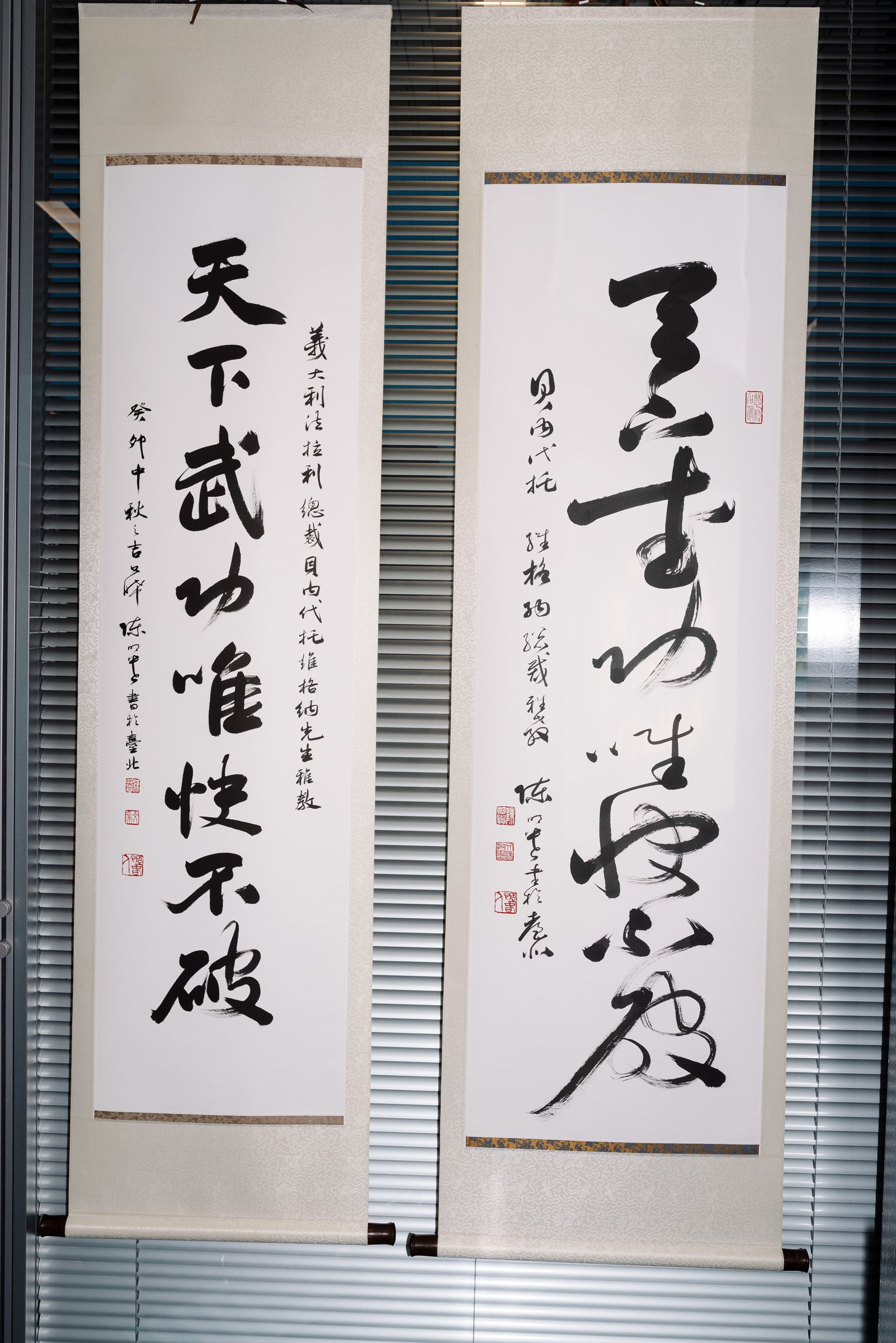
Vigna’s personal philosophy is encapsulated in the script on the Chinese scrolls hanging in his office, which read, “Quick action and decision are the keys to success.”
UP: You want to sail?
BV: Yes, together with Giovanni Soldini, one of the most successful skippers. Racing is in this company’s DNA. But what does racing mean? Competition. And competition means work, it means ambition, and a hunger for success. Competition is the drive to do things better. Ultimately, the purpose of this company is very simple – to constantly redefine the limits of what’s possible. If someone’s faster than you, you have the duty to change that.
UP: In Formula 1, Ferrari also demonstrates that passion is the real success of the brand. The jubilation in Monza after Leclerc’s victory was [possible only] at Ferrari. How do you explain it?
BV: The victory at Monza was pure joy for me. The same day, we also won the Endurance race in Austin. I will never forget September 1, 2024. Those two victories were the best gift I could receive on my third anniversary with Ferrari. You can’t imagine how many messages I got from clients and tifosi from all over the world.
UP: We might have an AI in the future that is so perfect that it no longer makes mistakes – isn’t that inhuman?
BV: Perfection isn’t part of existence. If you pretend to be perfect, it’s already over. What’s truly important is progress, not perfection.
UP: Meaning?
BV: Don’t be perfect, you’ll never be perfect. Because you’ll cease to exist if you’re perfect. There’s even a wonderful saying where I’m from in southern Italy: the coffin comes when you think your house is done.
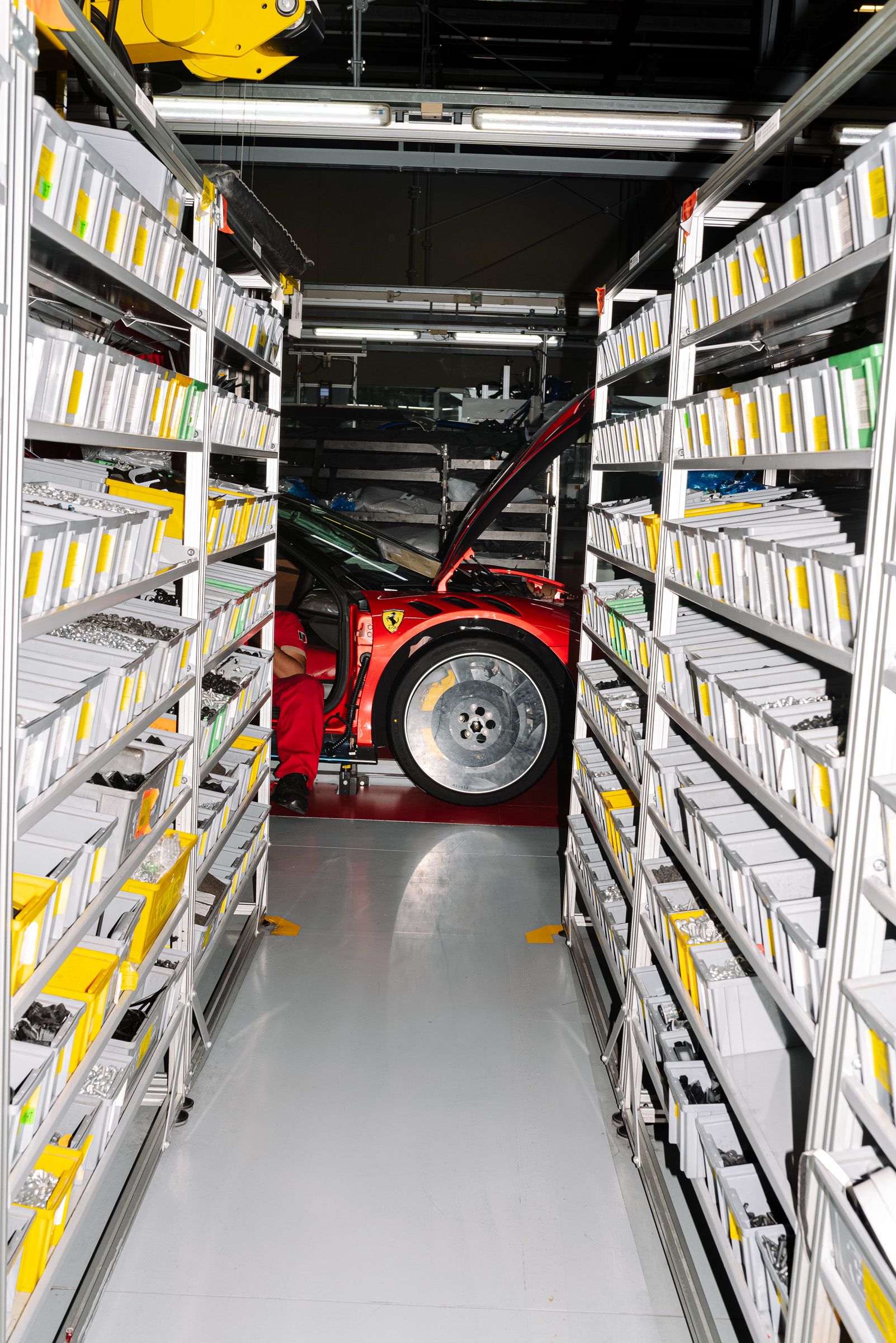
UP: Another strikingly humanistic and existential statement …
BV: On top of that, the younger generation is slowly losing the ability to deal with uncertainty. We used to be more accustomed to living with uncertainty, but people want to be perfect now. The same goes for cars. Sales wizards have been incredibly successful in convincing car manufacturers to adopt technologies that create the illusion of perfect mobility. But Ferrari is about something different: whether you’re driving an old Testarossa, a new Roma, a Purosangue, or, in the future, an e-Ferrari, it’s about an unmistakable, incomparable experience.
UP: Will there be self-driving Ferraris in the future?
BV: Are you joking? Of course not.
UP: What does progress mean to you?
BV: Something that lasts. The future belongs to those who are able to say, “That’s enough.” We can’t change the past. We need progress, but always with the awareness that we can’t lose touch with reality. If you lose touch with reality, things fall apart.
UP: Enzo Ferrari … spoke the dialect of the farmers in this region. It’s a rural and humble region. Does this humility still define Ferrari, despite all the Instagram hype and bubbles of the super-rich?
BV: We’ve stayed down to earth. As every sports car fan and racing driver knows, you end up crashing if you lose your grip on reality. Our employees are down to earth. Tomorrow is Family Day, where all the families of our employees are invited. We must never forget where we came from.
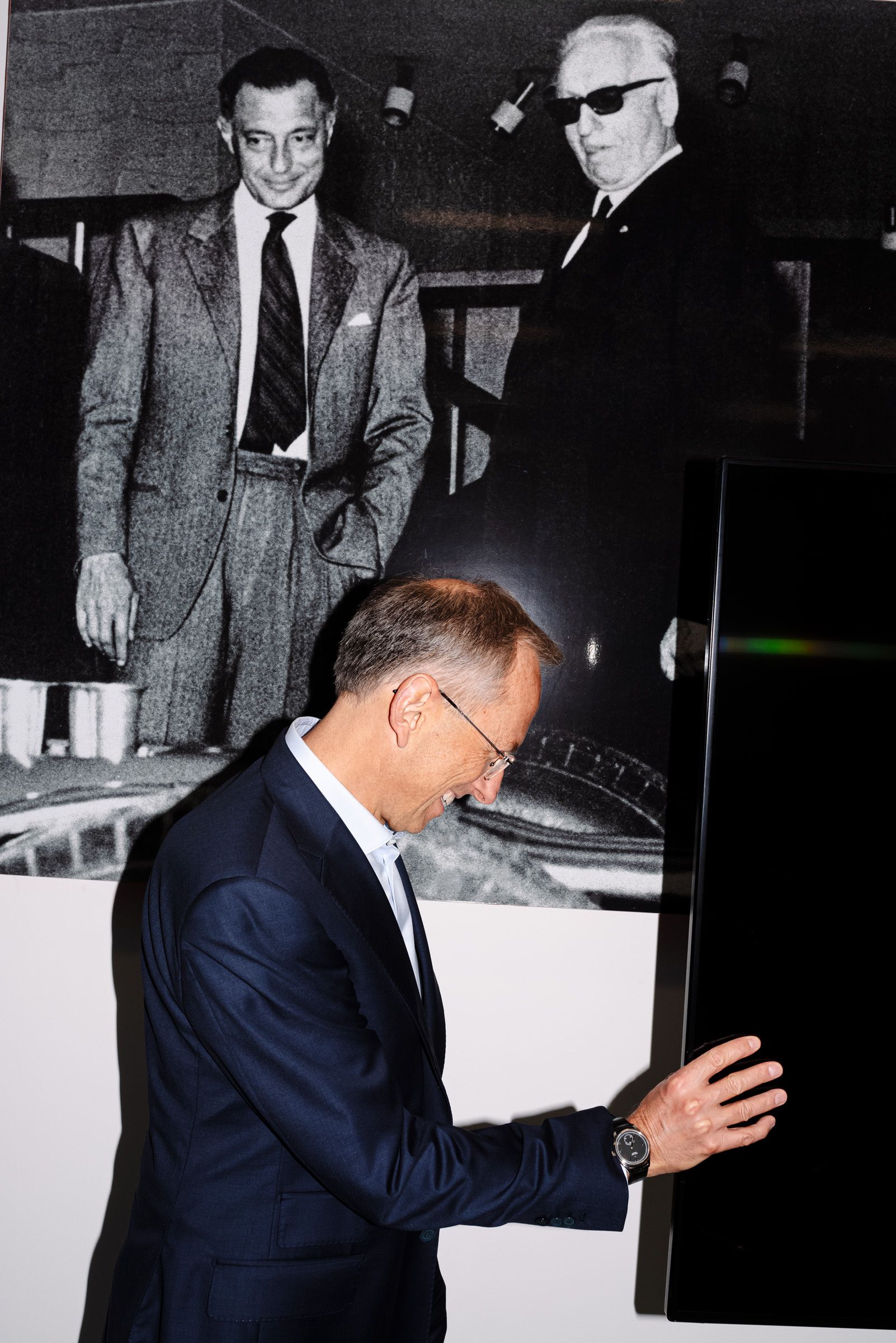
UP: When did you drive your first Ferrari, and what did that do to you?
BV: I was lucky enough to be invited for a ride by a friend of mine in California, many years ago. It was pure exhilaration! It was a first love that never fades. A Ferrari isn’t just a car, it’s an experience. You have to drive it to understand it.
UP: In the past, Ferrari was designed for the European aristocracy and the bourgeois elite on Lake Como. The global markets have entirely changed now. How does that change the Ferrari brand? Ferrari [and its personnel] have been masters in creating a very European aesthetic and culture. But now you have many customers in Dubai, China, and especially the United States.
BV: Divide America up into its individual states and imagine that the United States has been split up. Which would be the country where we sell the most Ferraris?
UP: To be honest, I don’t have a clue.
BV: Germany. Germany is number one. Number two is Japan. Numbers three and four are Italy and China. And only then come Florida and California.
UP: I’m glad the cars don’t look very German.
BV: I like Germany. And from my travels and encounters at my old company, I’ve come to admire the German middle class very much … but unfortunately, I have to go right now. They want to take my photo.
UP: Just one last request as a Ferrari customer. Please keep your products scarce. Some sports car brands have flooded the market, and that takes away the aura. Or is it elitist to think that way?
BV: Rest assured. We will always maintain the highest level of exclusivity – we will always have one car less than the demand, as Enzo liked to say.
Credits
- Text: ULF POSCHARDT
- Photography: PIOTR NIEPSUJ